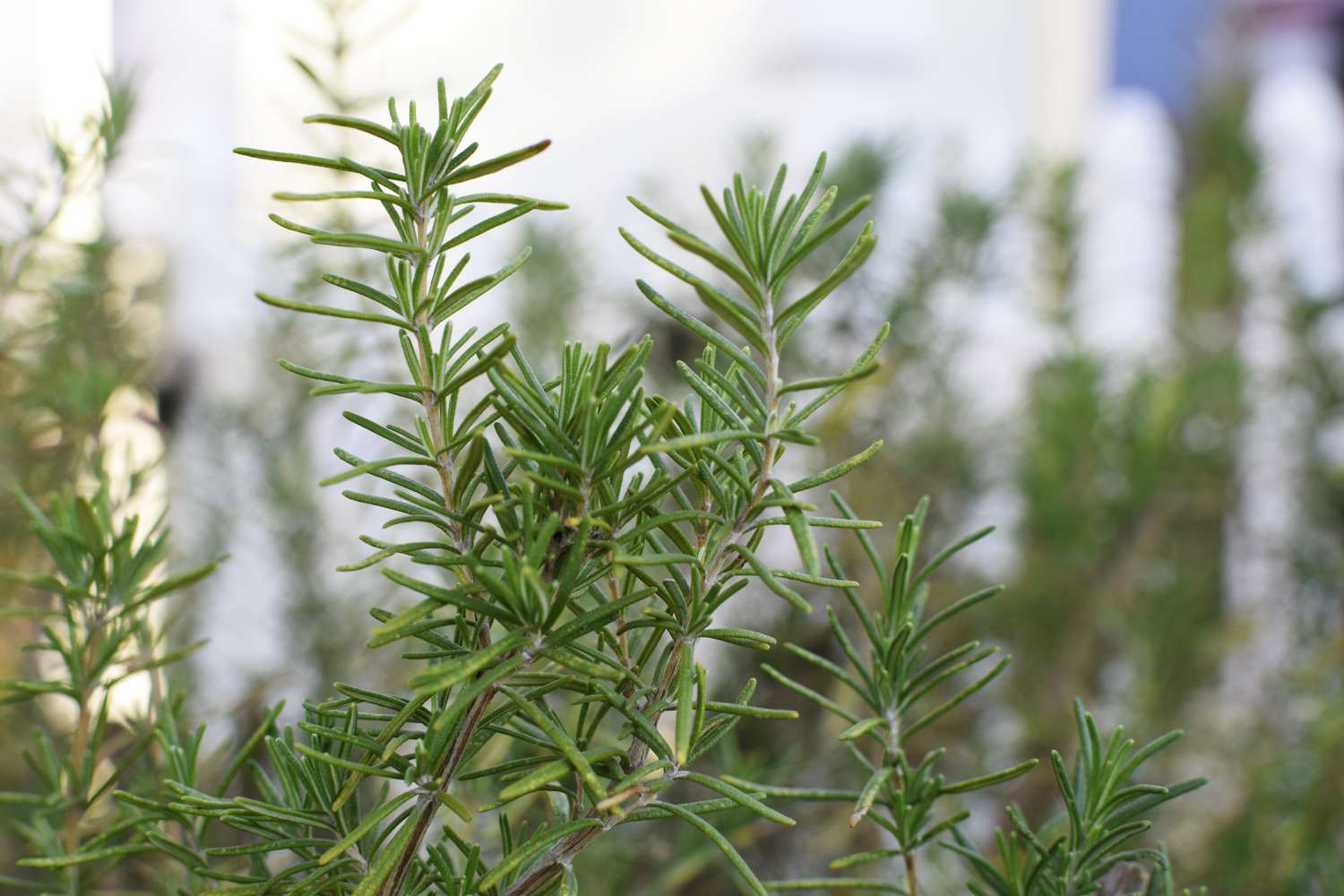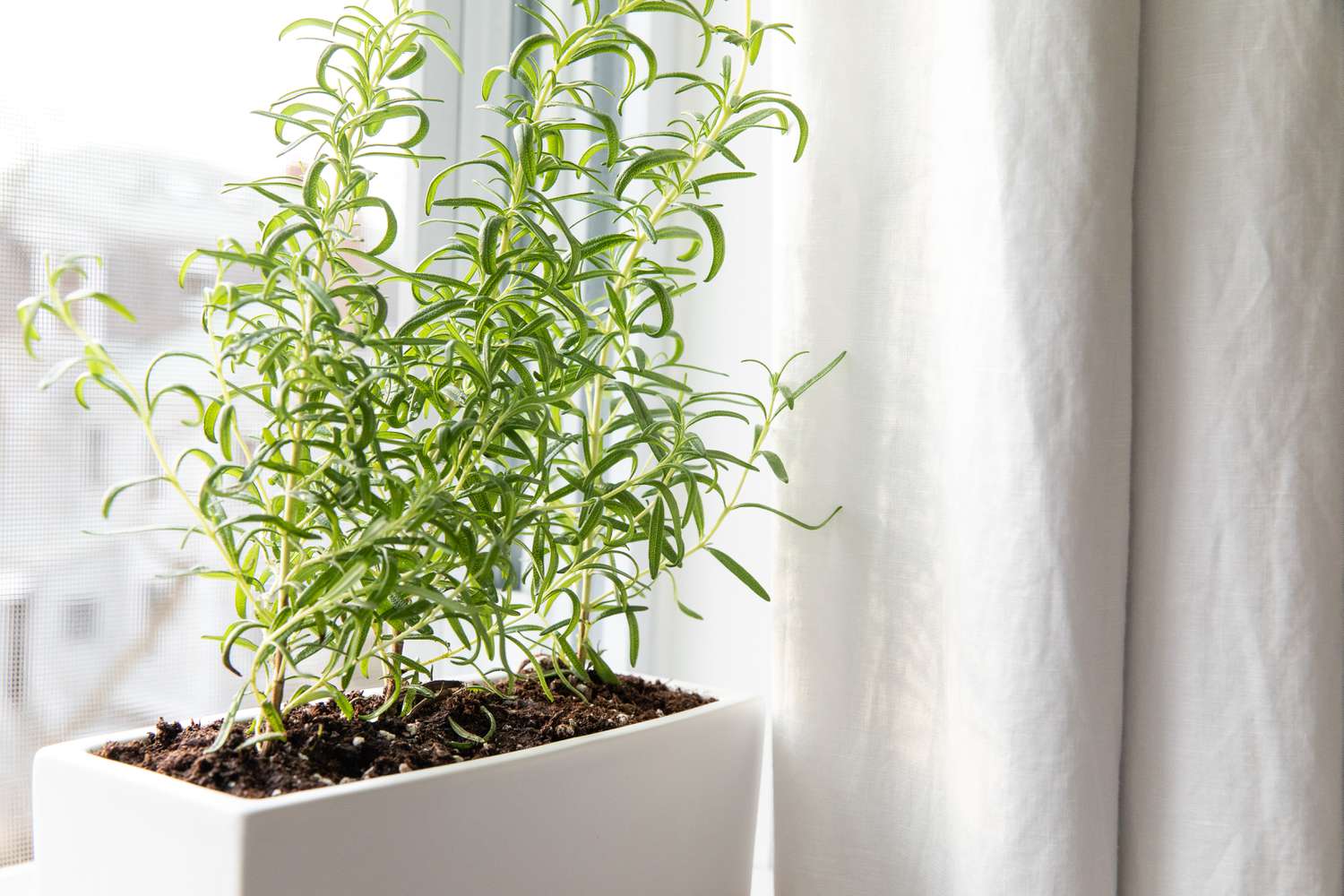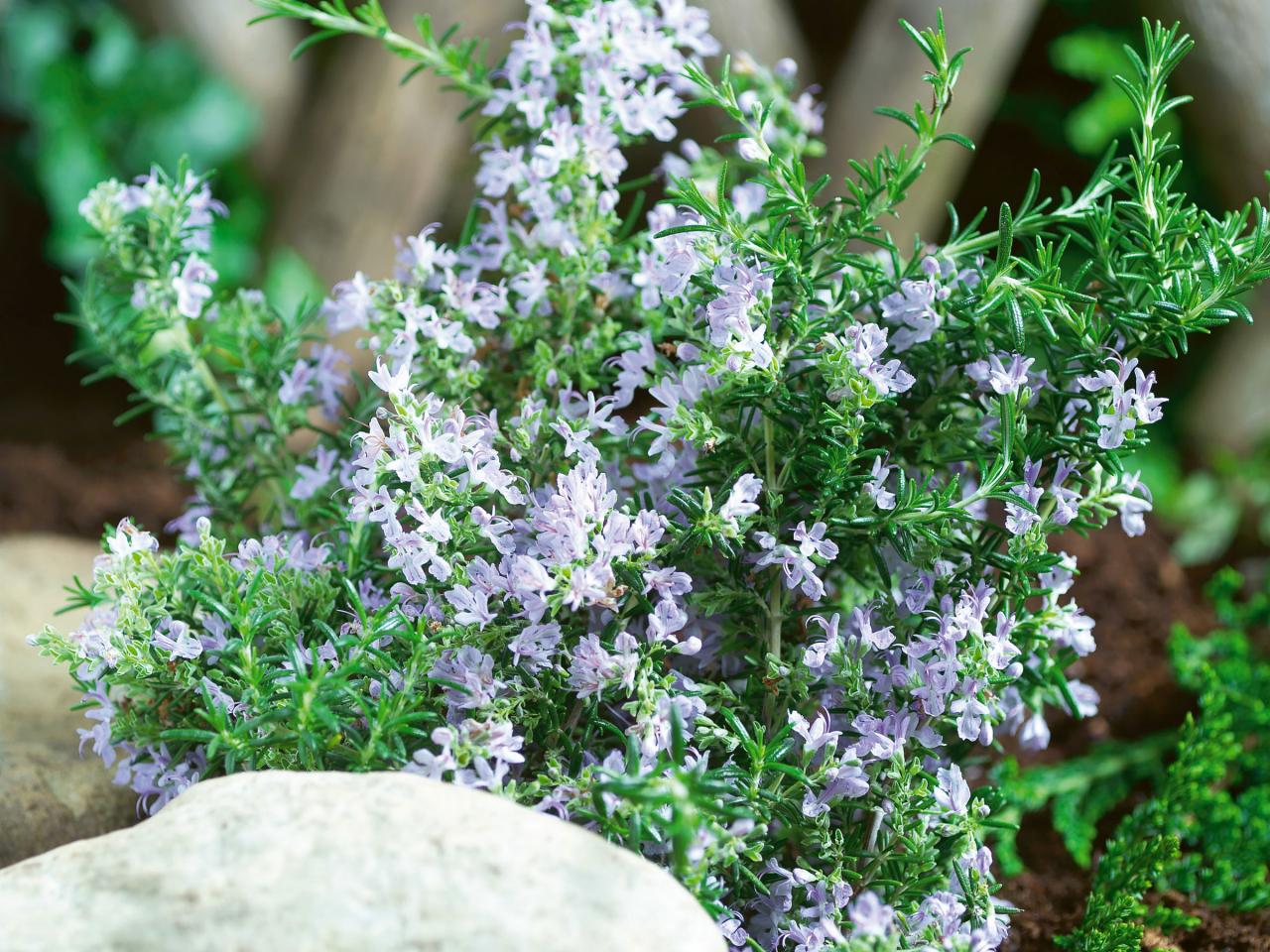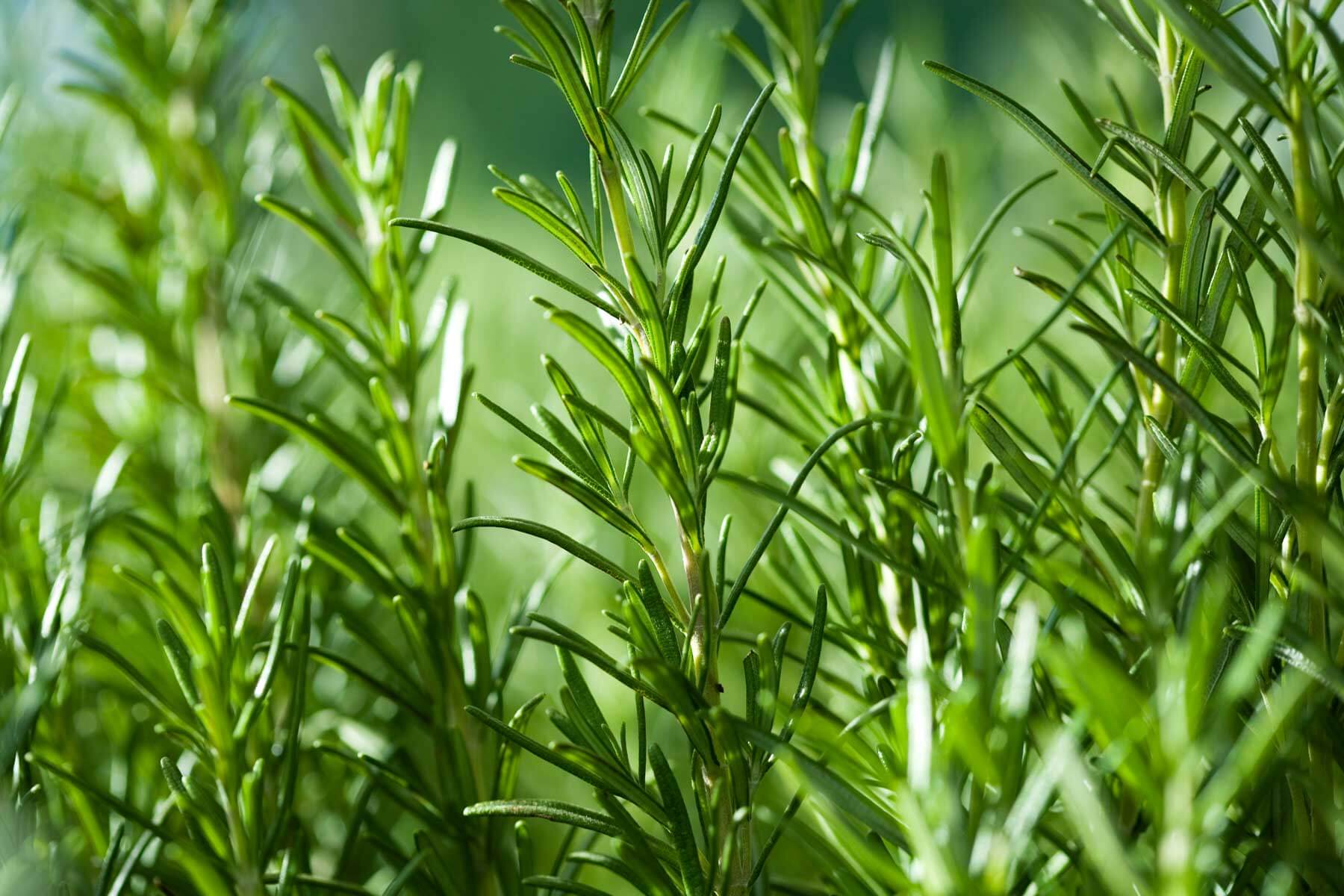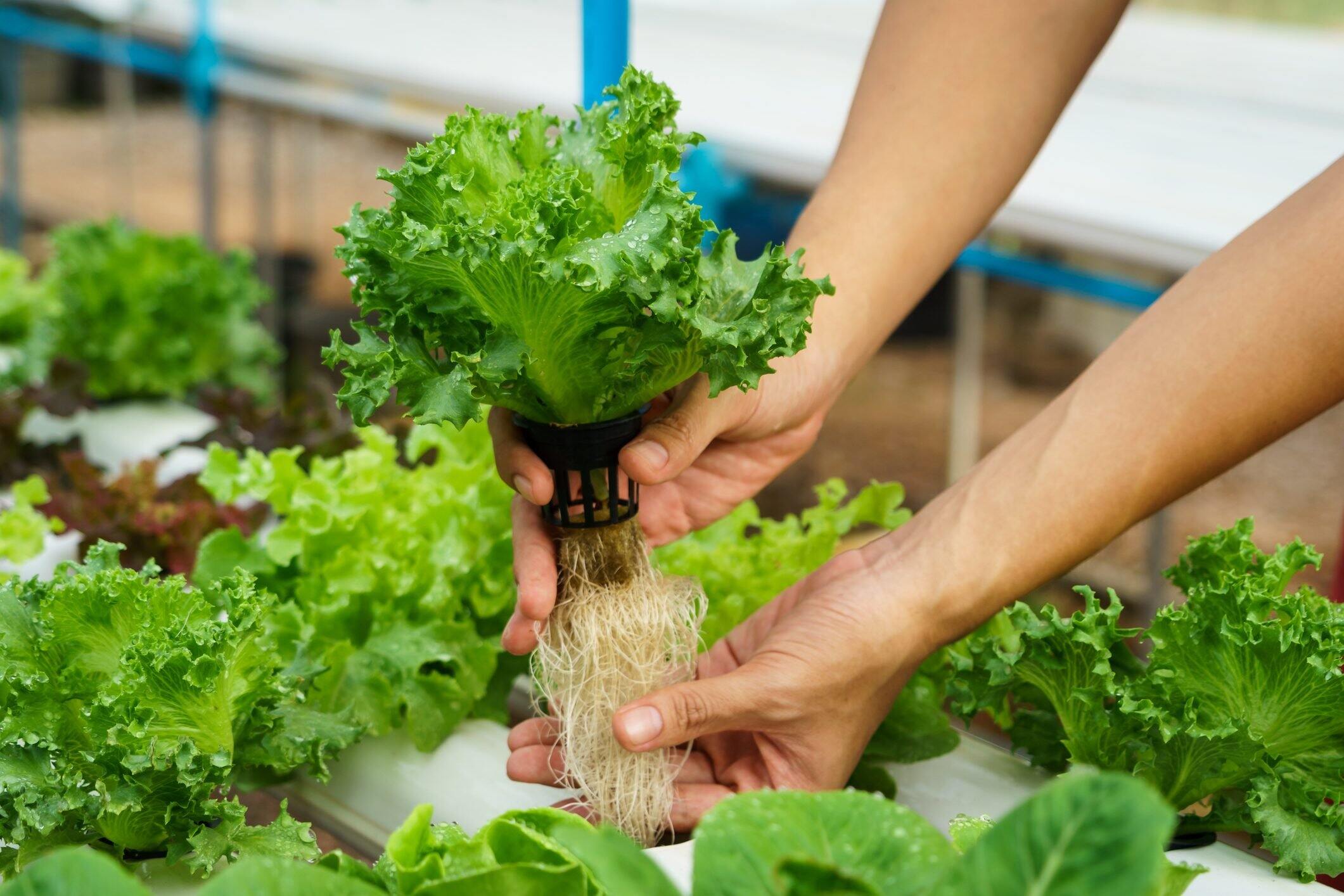Home>Types of Gardening>Edible Gardening>How To Grow Rosemary Plants
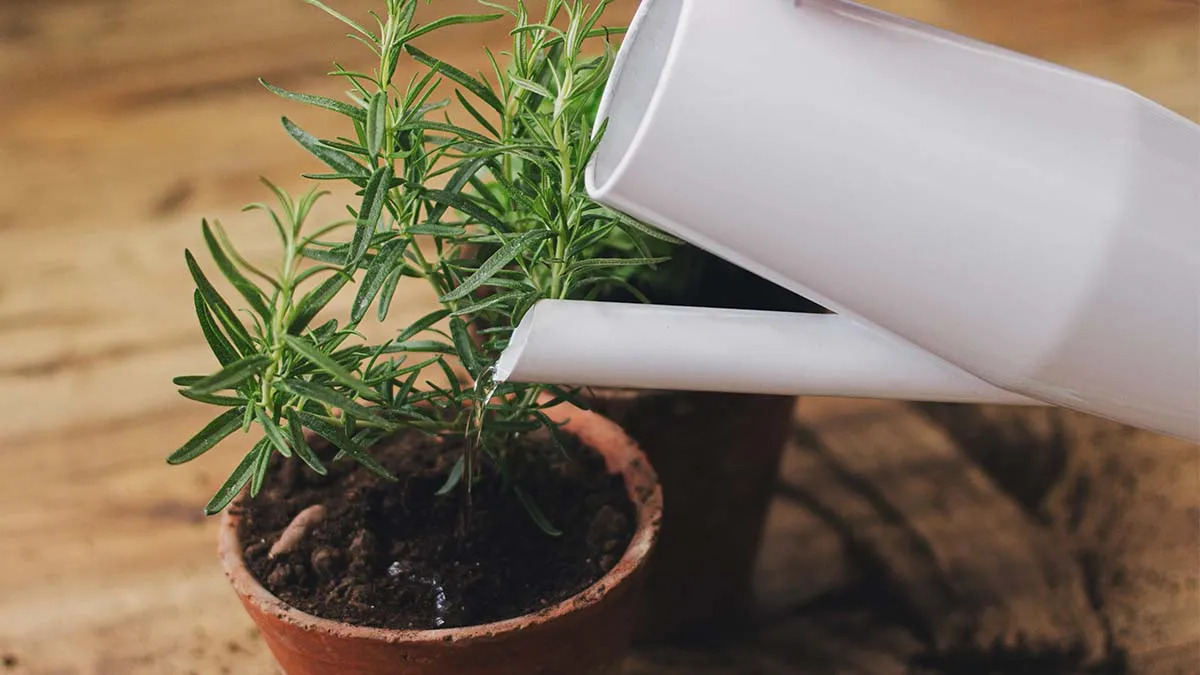

Edible Gardening
How To Grow Rosemary Plants
Published: January 28, 2024
Learn how to successfully grow rosemary plants in your edible garden with our expert tips and advice. Discover the secrets to cultivating healthy and flavorful rosemary at home.
(Many of the links in this article redirect to a specific reviewed product. Your purchase of these products through affiliate links helps to generate commission for Chicagolandgardening.com, at no extra cost. Learn more)
Table of Contents
**
Introduction
**
Welcome to the world of rosemary gardening! Whether you're a seasoned gardener or just starting out, growing rosemary plants can be a rewarding and aromatic experience. Rosemary, with its fragrant needle-like leaves and delicate blue flowers, is not only a delightful addition to any garden but also a versatile herb that can elevate your culinary creations.
In this comprehensive guide, we will delve into the art of cultivating and caring for rosemary plants. From selecting the ideal location to troubleshooting common issues, we will cover every aspect of nurturing these resilient and flavorful herbs. By the end of this journey, you will be equipped with the knowledge and confidence to grow thriving rosemary plants in your own garden.
So, roll up your sleeves, grab your gardening tools, and let's embark on this aromatic adventure together. Whether you have a sprawling garden or a cozy balcony, there's a place for rosemary in your green space. Let's explore the essential steps to cultivate and care for this beloved herb, and soon you'll be savoring the fruits of your labor in the form of freshly harvested rosemary for your culinary masterpieces.
Choosing the Right Location
Before diving into the process of planting and caring for rosemary, it’s crucial to identify the optimal location for these aromatic herbs to thrive. Rosemary plants thrive in abundant sunlight, so it’s essential to select a spot that receives at least six to eight hours of sunlight each day. Whether you’re considering a garden bed, a container, or a window box, prioritize a location that basks in the sun’s warm embrace.
Additionally, it’s important to choose a well-ventilated area for your rosemary plants. Good air circulation helps prevent common issues such as powdery mildew and root rot. If you live in a region with high humidity, ensure that the chosen location allows for adequate airflow around the plants.
While rosemary is resilient and adaptable, it thrives in well-draining soil. Therefore, when selecting a location, consider the soil composition and drainage. Avoid areas with compacted or waterlogged soil, as this can lead to root rot and other detrimental conditions. If your garden soil is heavy and poorly draining, consider planting rosemary in a raised bed or container filled with a well-draining potting mix.
Whether you’re cultivating rosemary in a garden or a container, proximity to frequently used areas, such as the kitchen, can be advantageous. Having fresh rosemary within easy reach encourages its frequent use in culinary endeavors, allowing you to savor the herb’s delightful flavors and aromas in your dishes.
By carefully selecting the right location for your rosemary plants, you lay a solid foundation for their growth and vitality. The ideal spot should offer ample sunlight, good air circulation, well-draining soil, and accessibility for your culinary adventures. With the perfect location secured, you’re ready to embark on the next steps of preparing the soil and planting your rosemary with confidence and enthusiasm.
Preparing the Soil
As you prepare to cultivate vibrant rosemary plants, the condition of the soil plays a pivotal role in their overall health and productivity. Rosemary thrives in well-draining soil with a slightly acidic to neutral pH level, typically ranging from 6.0 to 7.0. Before planting, it’s essential to assess and, if necessary, amend the soil to create an optimal growing environment for your rosemary.
Start by testing the soil’s pH level using a simple at-home testing kit, readily available at garden centers. If the pH level falls outside the recommended range, you can adjust it by incorporating organic matter or soil amendments. Adding compost or well-rotted manure can enhance soil structure and fertility while aiding in pH regulation.
When it comes to drainage, rosemary detests soggy feet. To improve drainage, consider incorporating coarse sand or perlite into the soil. This helps prevent waterlogging and reduces the risk of root rot, a common concern for rosemary plants. Additionally, raised beds or mounded planting areas can be advantageous, especially in regions with heavy or poorly draining soil.
Before planting, take the time to loosen the soil to a depth of around 12 inches, ensuring that it is friable and well aerated. This facilitates root penetration and encourages healthy root development, laying the groundwork for robust and resilient rosemary plants.
As you prepare the soil, keep in mind that rosemary is native to the Mediterranean region, where it thrives in lean, well-draining soil. By emulating these growing conditions, you can create an environment that mirrors the herb’s natural habitat, promoting vigorous growth and abundant flavor.
With the soil meticulously prepared to meet the specific needs of rosemary, you are poised to embark on the next phase of this aromatic gardening journey: the actual planting of your rosemary herb. Armed with a deep understanding of the soil’s crucial role in nurturing healthy plants, you are well on your way to cultivating thriving rosemary in your garden or container.
Planting Rosemary
Now that you’ve chosen the perfect location and prepared the soil, it’s time to embark on the exciting process of planting your rosemary. Whether you’re working with potted seedlings or propagating from cuttings, the following steps will guide you through the seamless integration of these aromatic wonders into your garden or container.
Before planting, it’s essential to consider spacing. Rosemary plants, with their potential to reach a height and spread of 2 to 4 feet, require ample room to flourish. If you’re planting multiple rosemary bushes, ensure a spacing of at least 2 to 3 feet between each plant, allowing them to thrive without overcrowding.
When handling the seedlings or cuttings, gently loosen the root ball and prune any damaged or excessively long roots. This encourages the development of a healthy root system, facilitating the plant’s establishment and growth. If you’re planting multiple seedlings, space them evenly, maintaining consistent spacing between each plant for optimal air circulation and future growth.
As you position the rosemary in the prepared soil, ensure that the top of the root ball aligns with the surrounding soil level. Gently pat the soil around the base of the plant to secure it in place, providing stability while allowing for proper root development and nutrient uptake.
Following the planting process, it’s crucial to water the newly positioned rosemary thoroughly. This initial watering helps settle the soil, eliminates air pockets around the roots, and provides essential moisture for the plant’s immediate needs. Going forward, maintain a regular watering schedule, ensuring that the soil remains consistently moist but not waterlogged.
Whether you’re cultivating rosemary in a garden bed or a container, the planting process sets the stage for the herb’s growth and development. By providing ample space, nurturing a healthy root system, and ensuring proper hydration, you empower your rosemary plants to thrive and grace your garden with their aromatic presence.
With your rosemary securely nestled in its new home, the next steps involve ongoing care, including watering, fertilizing, and pruning, to foster robust growth and abundant harvests. As you continue this aromatic journey, your efforts will soon be rewarded with flourishing rosemary plants ready to enhance your culinary creations and elevate your gardening experience.
Watering and Fertilizing
Proper watering and fertilization are essential elements in nurturing healthy and flavorful rosemary plants. Understanding the specific needs of these aromatic herbs and implementing appropriate watering and fertilization practices are key to ensuring their vitality and productivity.
When it comes to watering, rosemary plants thrive in well-drained soil and prefer slightly dry conditions over consistently soggy or waterlogged environments. Allow the soil to dry out slightly between watering sessions, as this mimics the natural moisture patterns of rosemary’s native Mediterranean habitat. When watering, aim to moisten the soil to a depth of around 6 to 8 inches, ensuring that the roots receive adequate hydration without being inundated.
During the warmer months, when the plant is actively growing, monitor the soil moisture closely, especially in regions experiencing prolonged periods of high heat. In contrast, during the cooler months or in regions with higher humidity, adjust the watering frequency to accommodate the plant’s reduced moisture requirements.
When it comes to fertilization, rosemary generally thrives in lean soil and is relatively low-maintenance in terms of feeding. Excessive fertilization can lead to lush foliage at the expense of flavor and aroma, compromising the herb’s culinary appeal. Opt for a balanced, slow-release fertilizer or a diluted liquid fertilizer, applying it sparingly to avoid overwhelming the plant with nutrients.
Applying a thin layer of compost around the base of the plant in the spring can provide a gentle nutrient boost, enriching the soil and supporting the plant’s growth without inducing excessive foliage at the expense of flavor. This approach aligns with rosemary’s preference for lean soil while ensuring that it receives the essential nutrients for robust and flavorful growth.
By adhering to thoughtful watering practices and adopting a conservative approach to fertilization, you can provide your rosemary plants with the ideal growing conditions for robust and aromatic development. These mindful practices not only support the plant’s well-being but also contribute to the quality and intensity of the flavors and aromas infused into your culinary creations.
Pruning and Maintenance
Pruning and maintenance play a crucial role in nurturing thriving and visually appealing rosemary plants while enhancing their flavor and aroma. Regular pruning not only promotes healthy growth but also helps maintain the plant’s shape, manage its size, and stimulate the production of flavorful foliage.
When it comes to pruning, the ideal time to trim your rosemary plant is in the spring, just before new growth emerges. Begin by inspecting the plant for any damaged, dead, or diseased branches, and promptly remove them to encourage the development of healthy new growth. Additionally, prune any leggy or straggly stems to maintain a compact and bushy form, enhancing the plant’s aesthetic appeal.
As you prune, focus on shaping the plant to your desired form while ensuring that the remaining foliage receives ample sunlight and airflow. This not only contributes to the plant’s visual appeal but also supports its overall health and vigor.
Regular maintenance tasks, such as removing weeds from the vicinity of the plant and monitoring for pests and diseases, are integral to sustaining the well-being of your rosemary. Weeds can compete with the plant for essential nutrients and moisture, so keeping the area around the plant clear of weeds contributes to its overall health.
Inspect the plant regularly for signs of pests, such as spider mites or aphids, and promptly address any infestations to prevent them from compromising the plant’s vitality. Additionally, be on the lookout for common diseases, including powdery mildew and root rot, and take proactive measures to mitigate these issues to ensure the plant’s continued flourishing.
By incorporating regular pruning and diligent maintenance into your rosemary care routine, you not only foster the plant’s visual appeal and health but also contribute to the robustness and intensity of its flavor and aroma. Embracing these practices empowers you to savor the full potential of your rosemary plants, whether in culinary endeavors or simply as a captivating addition to your garden or living space.
Harvesting Rosemary
Harvesting rosemary is a gratifying culmination of your efforts, offering an opportunity to savor the herb’s aromatic essence and incorporate its flavorful foliage into a myriad of culinary delights. Whether you’re seeking to infuse your dishes with its distinctive fragrance or create fragrant sachets and herbal remedies, understanding the art of harvesting rosemary is essential to maximize its culinary and aromatic potential.
As a general guideline, it’s best to wait until the plant is well established before initiating the first harvest. Typically, it’s advisable to refrain from harvesting from a newly planted rosemary for the first year, allowing the plant to focus on establishing a robust root system and vigorous growth.
When the time is ripe for harvesting, early morning is often considered an optimal time, as the essential oils responsible for rosemary’s captivating aroma are most concentrated at this time of day. Using sharp, clean scissors or pruning shears, selectively trim the stems, avoiding excessive pruning that may hinder the plant’s growth and vitality.
When harvesting, focus on the top portions of the stems, cutting just above a set of leaves or at a point where the stem forks. This approach encourages the plant to produce new growth from the pruned areas, promoting a bushy and productive form.
Whether you’re seeking to utilize the fresh foliage immediately or preserve it for future use, the harvested rosemary can be employed in an array of culinary applications. From seasoning roasted meats and vegetables to infusing oils, vinegars, and homemade seasonings, the freshly harvested rosemary lends a delightful aromatic dimension to an assortment of dishes and culinary creations.
For those interested in preserving the harvested rosemary, options such as air-drying, oven-drying, or freezing provide versatile methods to extend the herb’s shelf life while retaining its flavor and aroma. These preserved treasures can then be effortlessly incorporated into your culinary repertoire, enhancing the taste and fragrance of your favorite recipes throughout the year.
As you immerse yourself in the art of harvesting and utilizing rosemary, you unlock the herb’s potential to elevate your culinary endeavors and enrich your sensory experiences. By embracing the nuances of harvesting and preserving this aromatic gem, you can savor its essence year-round, infusing your dishes with the captivating flavors and aromas that define rosemary’s timeless allure.
Troubleshooting Common Issues
While rosemary is renowned for its resilience, it is susceptible to a few common issues that can impact its growth and overall vitality. By familiarizing yourself with these potential challenges and their remedies, you can effectively troubleshoot and safeguard your rosemary plants, ensuring their continued health and productivity.
Powdery Mildew:
Powdery mildew, characterized by a white, powdery coating on the foliage, can affect rosemary, particularly in humid conditions. To mitigate this issue, ensure adequate air circulation around the plants, avoid overhead watering, and promptly remove and dispose of any affected foliage. Additionally, applying a fungicidal spray labeled for powdery mildew can help manage the issue.
Root Rot:
Excessive moisture and poorly draining soil can lead to root rot in rosemary plants. To prevent this, ensure that the soil is well-draining, and avoid overwatering. If root rot is suspected, carefully inspect the roots for discoloration and decay, and consider replanting in well-draining soil if necessary.
Pest Infestations:
Rosemary plants can fall prey to pests such as spider mites, aphids, and whiteflies. Regularly inspect the foliage for signs of infestation, including stippling, webbing, or the presence of insects. Utilize insecticidal soaps or neem oil to address pest issues, ensuring thorough coverage of the affected foliage.
Winter Damage:
In colder climates, rosemary plants may experience winter damage, especially in exposed or unprotected locations. Consider providing winter insulation, such as a layer of mulch or a protective covering, to shield the plants from harsh winter conditions and temperature fluctuations.
Nutrient Deficiencies:
Inadequate soil nutrition can manifest as yellowing foliage or stunted growth. Conduct a soil test to identify any nutrient deficiencies and amend the soil as needed. Applying a balanced, slow-release fertilizer in the spring can help address potential nutrient deficiencies and support the plant’s overall health.
By proactively addressing these common issues and implementing appropriate preventive measures, you can fortify your rosemary plants against potential challenges, ensuring their enduring vigor and aromatic allure. With a keen eye for early detection and a proactive approach to mitigation, you can cultivate thriving and resilient rosemary plants that grace your garden with their aromatic splendor.
Conclusion
Congratulations on embarking on a journey to cultivate and care for rosemary plants, unlocking the myriad delights that these aromatic herbs offer. Throughout this comprehensive guide, you’ve delved into the essential aspects of growing rosemary, from selecting the perfect location and preparing the soil to nurturing, harvesting, and troubleshooting common issues. By embracing the art of rosemary cultivation, you’ve not only enriched your gardening repertoire but also expanded your culinary horizons, infusing your dishes with the captivating flavors and aromas of this timeless herb.
As you tend to your rosemary plants, envision the vibrant foliage and delicate blossoms gracing your garden or living space, infusing the air with their invigorating fragrance. Picture the joy of harvesting sprigs of fresh rosemary, effortlessly elevating your culinary creations with their aromatic allure. Embrace the art of pruning and maintenance, sculpting the plants into bushy, resilient specimens that captivate the eye and tantalize the senses.
Amid this aromatic journey, you’ve gained insights into troubleshooting common issues, equipping yourself with the knowledge to safeguard your rosemary plants against potential challenges and nurture their enduring vitality. By mastering the art of harvesting and preserving rosemary, you’ve ensured a year-round supply of this aromatic treasure, enriching your culinary endeavors and sensory experiences.
As you continue to cultivate and care for your rosemary plants, remember that each step, from the tender planting to the bountiful harvest, is a testament to your dedication and green-thumb prowess. Embrace the nuances of rosemary gardening, savoring the moments spent nurturing these resilient and aromatic companions that grace your garden with their timeless allure.
May your rosemary plants flourish, infusing your days with their invigorating fragrance and enhancing your culinary creations with their captivating flavors. With each aromatic encounter, may you find joy and inspiration in the timeless art of cultivating and caring for these beloved herbs, enriching your garden, your kitchen, and your life with their enduring charm.


